Trading Day: live markets coverage; Mining stocks haul home gains; plus analysis and opinion
The ASX200 posts solid gains in public holiday affected trade as miners surge with a brighter China backdrop.

Welcome to Trading Day for Monday, October 2.
4.35pm: ASX closes higher in light trade
The local share market closed higher after a positive US lead and as China’s manufacturing activity rose above analyst expectations for September, to its highest rate in over 5-and-a-half years.
The benchmark S & P/ASX200 was up 47.7 points, or 0.84 per cent, at 5,729.3 points, while the broader All Ordinaries index was up 46.4 points, or 0.81 per cent, at 5,791.3 points.
Trading volume remained light throughout the session and closed 40 per cent below its 20-day running average, with a little over $3bn in equities changing hands.
Miners drove the market higher off the back of positive China data released over the weekend and despite low iron ore prices.
“China’s September PMI hit the highest level since May 2012. The new orders index was the key driver and the price index increased, indicating that September’s PPI will rise once again,” said ANZ economist Daniel Gradwell.
“This was the first time new orders beat output this year, suggesting a potential ‘excess demand’ to some extent.”
But Morgans retail Asian desk head Raymond Chan said he expects some tightening in steel production ahead of the China National Congress meeting in mid-October to clean out the air.
“Steel production will be depressed over the next few weeks and that will further hurt the iron ore price,” he said — more to come.
Rowan Callick 4.20pm: China delays food import rules
As China’s economy starts to slow, it is relaxing or postponing regulations in order to ensure that foreign investment and imports, eagerly sought by its growing middle class, continue to flow.
It has postponed the introduction of regulations that were to have required an inspection certificate to be provided by the Australian government with each shipment of food products.
The new rules, to be applied to all such imports from around the world, from raw commodities to processed foods, were to have come into effect yesterday — read more
Producers note: Blackmores, a2 Milk, Bellamy’s all with market exposure to China.
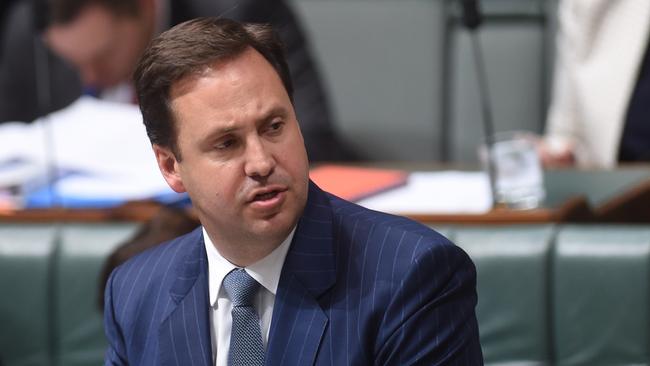
Darren Davidson 3.53pm: First Click Free cut first step: News
Google’s decision to end its controversial First Click Free program is an “important first step” for publishers striving to implement a sustainable business model in a digital world, according to News Corp’s (NWS) Robert Thomson.
The chief executive, who has been the most vocal critic of the search giant’s search practices, said the development is a welcome move away from a model that allowed users to read news articles without paying.
“The felicitous demise of First Click Free (Second Click Fatal) is an important first step in recognising the value of legitimate journalism and provenance on the internet,” said Mr Thomson — read more

3.50pm: Certainty subsidy to Trump tax cuts
Kate Davidson writes:
The Trump administration and congressional Republicans are counting on an overhaul of the U.S. tax code to rev up the anaemic U.S. economic growth rate. History suggests that isn’t a sure outcome.
John F. Kennedy, a Democrat, in 1963 proposed and Lyndon Johnson, also a Democrat, in 1964 signed into a law a cut in the top tax rate from 91pc to 70pc and a slightly lower corporate tax rate. Economic output expanded at a swift 4.7pc rate for the rest of the decade. Ronald Reagan signed a tax cut into law in 1981 and later reduced the corporate tax rate and economic output expanded at 3.8pc rate for the rest of the decade.
Those examples suggest a strong connection between tax cuts and growth.
Other examples cut the other way.
George H.W. Bush, a Republican, and then Bill Clinton, a Democrat, advanced increases in the top tax rate that became effective in 1991 and 1993 and U.S. output nevertheless expanded at a robust 4.1pc annual rate for the rest of the 1990s. George W. Bush, a Republican, cut taxes in 2001 and 2003 and growth expanded at an anaemic 1.7pc rate for the rest of the decade. And back in the 1950s, a top rate of 91pc prevailed and the economy nevertheless expanded at a steaming 4.5pc annual rate.
INTERPLAY
One complicating factor is the interplay between taxes, interest rates and growth. The U.S. economy boomed in the 1980s in part because the Federal Reserve beat down inflation with high interest rates and then, after a deep recession, cut interest rates aggressively. In the 1990s, interest rates were held down by a worker-productivity boom that helped to keep inflation lower than the Fed expected.
Tax and deficit policies can directly affect the level of interest rates and growth. In the 1990s, for example, U.S. policy makers counted on deficit cuts to keep interest rates low and spur economic growth. Some economists say big deficits, by pushing up public debt, crowd out private investment and growth. Some warn that deficit increases now could spur the Fed to raise interest rates faster than expected, potentially offsetting some of the benefits of lower tax rates.
Matthew Shapiro, another Michigan economic professor, said tax policy changes can have important short-run effects on business investment as well, but the effects tended to fade over time. “Most changes are fairly temporary, and there’s a big incentive to take advantage of those temporary changes,” he said. In other words, firms might shift investment plans forward to take advantage of a temporary change. The impact of permanent changes to the tax code lasted longer but were less pronounced, Mr. Shapiro said.
The Trump administration’s proposals are meant to boost labour supply by lowering individual rates and boost business investment by reducing corporate taxes and incentivising investment, Kevin Hassett, the recently confirmed chairman of the Council of Economic Advisers, said in an interview.
A permanent increase in the growth rate is “very, very difficult,” he acknowledged. But even a temporary increase in the growth rate would raise standards of living.
The Trump administration is aiming for a 3pc growth rate, compared with the 1.9pc growth rate that has prevailed since 2000.
Read the full article on The Wall Street Journal

Elizabeth Redman 3.40pm: Sydney home prices fall: CoreLogic
Sydney dwelling values have posted their most convincing evidence yet of a slowdown, falling 0.1 per cent last month, according to CoreLogic data.
Putting aside a tiny fall in April, it’s Sydney’s first clear month-on-month decline after 17 months of consistent capital gains.
Meanwhile Melbourne values rose 0.9 per cent, the CoreLogic Hedonic Home Value Index for September found.
Today’s figures offer more signs Australia’s heated east coast housing markets are continuing to lose steam.

3.20pm: What to expect from RBA tomorrow
The Reserve Bank is poised to deliver its verdict on its cash rate target at the conclusion of it October meeting tomorrow, and while the market is pricing in a near certain hold, the opposing pressures keeping it there are far from stationary.
The market implied probability of a rate cut sits a tenth of a per cent shy of zero before June next year, economy watchers in unison on their concern over Australia’s burgeoning level of household debt. Though fluctuations are systematic, the scale of this latest wave of personal credit has raised concern.
On the other hand, the market gives a 42.5 per cent probability to a 25 basis point hike by July 2018 as the RBA’s next move. This is despite persistently low wage growth, that thirsty for monetary stimulation, and an inflation rate just below its target band of 2-3 per cent.
Offshore leads such as gathering momentum behind monetary tightening, Trump tax developments and a fresh look at the policy of inflation targeting also ensure adequate fodder for the October board meet.
A key growth driver and down on fresh highs over US81 cents earlier in the fiscal year, the Australian dollar has swung 0.2 per cent lower to US78.20 cents ahead of the meeting tomorrow.

2.55pm: Behind Uber’s London troubles
The taxi drivers of London are famous for their black cabs, pricey fares and outspoken political commentary provided to passengers at no extra charge.
On September 22 they were given a new subject on which to hold forth when Transport for London, the capital’s transit authority, said it would not renew the operating licence of Uber, a ride-hailing app that cabbies loathe for poaching their fares.
“Uber is the school bully finally going to the headmaster,” cheers Steve McNamara of the Licensed Taxi Drivers’ Association.
But whether Uber will be banished from London’s roads remains to be seen.
TfL cites several reasons for its decision. First is Uber’s way of reporting serious crimes. London’s police force has accused the firm of not reporting six sexual assaults promptly last year, including one case in which the driver continued to work and then attacked another passenger.
Second is the company’s approach to how drivers’ medical and criminal-record checks are obtained, a point on which TfL does not elaborate.
Third, TfL is not satisfied with Uber’s explanation of how it uses Greyball, software with the capacity to hide information from regulators and law enforcers. (The company says it is not used for this in London, but there is evidence of its use to fool the authorities elsewhere.)

2.50pm: The Trading Day ahead
Join the conversation with our Trading Day experts for breaking news and analysis in financial markets here and on Sky News Business (Ch: 602)
3.00pm: Live cross — Shaw and Partners
2.00pm: Live Politics Panel
2.20pm: Raymond Chan — Morgans
(All times in AEST)

2.35pm: Ex-chancellor’s wages, housing crisis warning
Former Conservative British chancellor George Osborne, recently appointed editor of a top London newspaper, has warned centre-right political parties around the world not to neglect voter concern about anaemic wage growth or worsening housing affordability — including considering scrapping negative gearing — or risk looking like “angry old men on the park bench”.
Mr Osborne, whose six-year tenure as chancellor was associated with slashing government spending, corporate tax and strident opposition to Brexit, said the right needed to take inequality seriously, suggesting advocating lower taxes was “necessary but not sufficient”, and singling out the importance of supporting same-sex marriage and minimum wage rules.
“Not an incredibly conservative thing to do, but if you want to maintain support for a free market economy, people need to see a return on their labour,” Mr Osborne said.
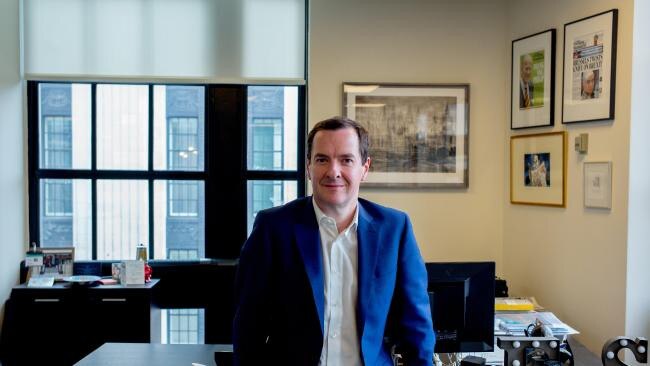
2.10pm: ASX200: Metals, miners boost bourse
Miners and metal makers firm solid gains on the local sharemarket amid thin trade, while investors take to the new week with a tailwind from weekend developments in China.
The S & P/ASX200 index jumps 1 per cent to 5743.4 on lower trading volume due to Labour Day public holiday in ACT, NSW and SA and Queen’s Birthday public holiday in Queensland.
Miners fill out both the large and mid-tier top performers as traders note strength in the main indicator on China manufacturing demand in September and a boon for Chinese SMEs in the form of looser government-mandated capital reserve restrictions.

Meanwhile, the Australian dollar trades 0.2 per cent lower at US78.22 cents ahead of the Rerserve Bank’s October meeting tomorrow.
1.50pm: The Trading Day ahead
Join the conversation with our Trading Day experts for breaking news and analysis in financial markets here and on Sky News Business (Ch: 602)
NOW: Live cross — Bloomberg Asia
2.00pm: Peter O’Connor — Shaw and Partners
2.20pm: Live cross — FIIG Securities
(All times in AEST)

12.53pm: Power slows factory production growth
Trevor Chappell writes:
Growth in Australia’s manufacturing sector slowed in September as high energy prices continued to put pressure on profits.
After reaching a 15-year high in August, the Australian Industry Group’s (Ai) Australian Performance of Manufacturing Index fell by 5.6 points to 54.2 points in September.
Readings above 50 points indicate expansion in activity.
September marked the 12th straight month of expansion for the manufacturing sector — the longest run of expansion since 2007.
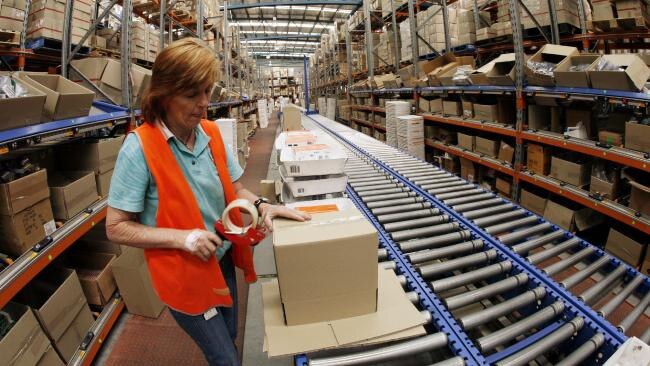
12.30pm: ASX200 steams ahead in light trade
The local sharemarket goes from strength to strength as shares across sectors post gains on thin volume in Labour Day public holiday trade.
The S & P/ASX200 index sits 1.1 per cent higher on 5745.
Heavyweight banks, miners and the majority of top 30 stocks by market capitalisation put on weight. Rio Tinto shares streak ahead of the pack by 2.5 per cent, while Beach Energy stacks on as much as 19 per cent after it announced institutional appetite for its capital raising to buy Origin Energy’s Lattice unit.
South32 hits a fresh all-time record high of $3.40 with a surge of over 3.8 per cent and a2 Milk does the same to lift almost 6 per cent to hit $6.19.
Meanwhile, the Australian dollar trades 0.1 per cent higher at US78.33 cents ahead of the Rerserve Bank’s October meeting tomorrow.
11.20am: CBA’s ASB boss to retire
Commonwealth Bank has announced the departure of another senior executive, with its wholly-owned New Zealand lender ASB Bank looking to replace departing long-serving chief executive Barbara Chapman.
Ms Chapman, who has steered the bank since 2011, is the latest senior executive set to quit CBA in recent months following the explosive allegations Australia’s largest bank breached anti-money laundering legislation more than 53,000 times.
ASB is the second largest bank in New Zealand, where Australia’s big four banks, as they do on this side of the Tasman, dominate the market.
The big four Australian lenders control about 90 per cent of the Kiwi market. CBA’s ASB is the second largest New Zealand lender, behind ANZ Banking Group. National Australia Bank operates under the Bank of New Zealand banner, while Westpac owns the Westpac Trust brand — read more
CBA last up 1.2 per cent at $76.16

11.03am: China surge to bolster bourse
Signs of stronger economic growth in China and record highs on Wall Street should drive the Australian sharemarket higher this week.
A positive reaction to Friday’s gains in global equity markets is likely to be magnified by weekend news of a surge in China’s manufacturing purchasing manager’s index for September.
The main indicator of manufacturing demand for the world’s No. 2 economy and the biggest consumer of commodities jumped to a 5½-year high.
The official PMI read was 52.4 points, from 51.7 a month earlier, the highest since 2012.
An unofficial manufacturing PMI released by Caixin fell to 51, versus 51.5 points expected.
The official PMI for the services sector rose to 55.4 from 53.4 points a month earlier.
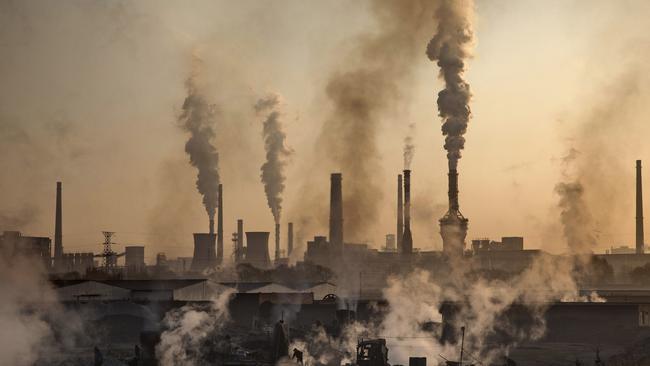
Turi Condon 10.45am: China buyers ‘haven’t stopped’
Chinese investment will continue to flow into Australia’s housing market despite tighter mainland capital restrictions, with real estate portal Juwai predicting levels will peak again despite a near-10 per cent fall in inquiries earlier this year.
Inquiries on the website for Australian property from potential Chinese buyers have fallen 9.7 per cent in the first half of this year compared with the first six months of 2016, according to a Juwai.com spokesman.
“It’s down on last year, but it’s still going to be the second or third biggest year (for inquiries),” the spokesman said.
“It’s like going through the foothills — there are more peaks ahead.”

10.30am: ASX surges in sea of green
The local share market pushes strongly into the new trading week as a fresh surge of optimism spurs gains across every sector.
The S & P/ASX200 index trades 0.4 per cent higher at 5706.1.
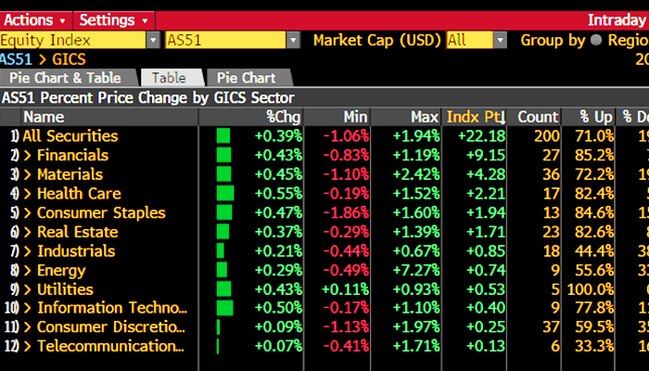
The top 20 ASX stocks all sit higher while Beach Energy leaps higher by as much as 18 per cent to a more than two-year high of $0.97 after it filled out 98 per cent of the institutional component to its equity funds raising to buy Origin Energy’s Lattice.
Meanwhile, the Australian dollar lifts after the opening bell to trade 0.2 per cent higher at US78.44 cents ahead of the Reserve Bank cash rate decision tomorrow.
9.50am: Beach locks in Lattice funds
Beach Energy says it has raised over two-thirds of its $301m capital raising for funds to purchase Origin Energy’s Lattice unit via an institutional placement taken up by 98 per cent of eligible shareholders.
The company says major shareholder and offer sub-underwriter Seven West Group has taken up its full equity entitlement.
BPT last $0.82.
9.40am: ASX200 to lift on China production boost
The local sharemarket is set for an opening rise Labour Day Monday after it rallied late last week ahead of a fresh indication of Chinese growth signalled by economic data released over the weekend.
At 7am (AEDT), the share price futures index was up 14 points, or 0.25 per cent, at 5,682.
The lead indicator of manufacturing activity for our largest trading partner China rose above expectations in September to its highest rate in over 5-and-a-half years.
“The China NBS data was highly positive,” said IG chief market strategist Chris Weston, “if you mix that with the reserve ratio cuts for (Chinese) banks to incentivise them to lend to small business, we should be seeing some buying of the mining stocks after a flat start.”
Mining stocks led gains in the session previous, while ahead of the open the spot price of iron ore fell, according to China port indices.
Trading volumes and corporate newsflow is expected to remain tight on Labour Day public holiday, while China’s national ‘Golden Week’ of national holidays will slow economic activity and indications from the region in October’s opening trading days.
Meanwhile, the Australian dollar trades 0.1 per cent higher on US78.43 cents ahead of the Rerserve Bank’s October meeting and cash rate decision tomorrow in which it is largely expected to keep rates on hold at a historic low of 1.5 per cent.
Paul Garvey 9.25am: Fortesue happy to sit on gold
A gold rush in Western Australia’s Pilbara has created more than a billion dollars of value in a matter of weeks, but the region’s biggest tenement holder is in no hurry to join in the frenzy.
Andrew Forrest’s iron ore heavyweight Fortescue Metals, which is increasingly looking to the potential of its massive Pilbara ground position for other commodities, holds a large parcel of ground to the south of the Purdys Reward gold discovery that has ignited the share prices of several junior explorers.
But Fortescue chief executive Nev Power said the company had not taken any action in response to the gold frenzy nearby — read more
FMG last $5.16
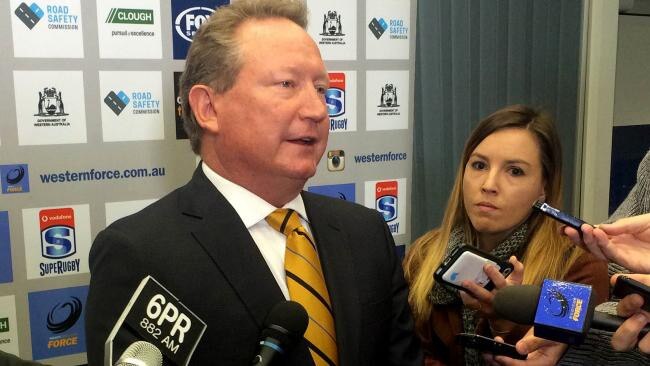
9.00am: Brighter pastures tug at Sumitomo
Bridget Carter and Scott Murdoch write:
Speculation is mounting that Nufarm’s largest shareholder Sumitomo could be selling out of the listed agrochemicals company.
This follows heavy trading in the stock last week. Talk that the Japanese trader may be a seller of its 23 per cent stake started to emerge in recent weeks.
Nufarm last Tuesday reported a sharp rise in net profit for the year to July, booking $114.5 million compared with $27.5m in the previous corresponding period — read more from DataRoom
NUF last $8.30
8.55am: More dividend cuts cropped: Telstra chair
Bridget Carter and Scott Murdoch write:
Telstra chairman John Mullen has been reassuring the telco’s largest institutional investors that the dividend is unlikely to be cut further and urging calm over the pressure building on chief executive Andy Penn.
Mr Mullen has met fund managers, and Telstra’s senior managers are holding meetings with its biggest retail shareholders around the country to assure them there won’t be any further cuts to dividends.
The company ordered a major capital shake-up last month when it said the 2018 full-year payout would be reduced by 30 per cent to 22c — read more from DataRoom
TLS last $3.48
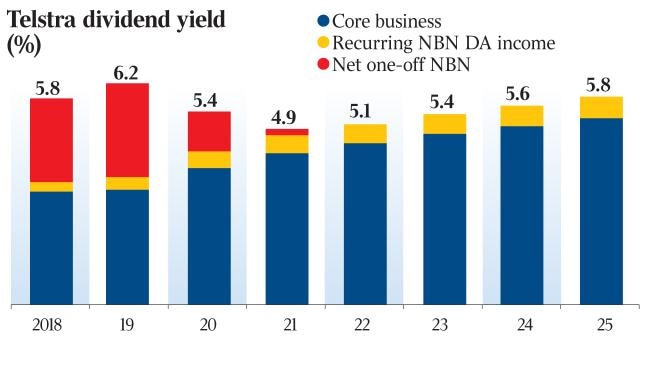
Paul Garvey 8.50am: Mining services fortune bright
Australia’s mining and engineering contractors are on the cusp of a sustained upwards surge reminiscent of that seen during the last mining boom.
That’s the view of Stephen Wood and Victor Gomes, the portfolio managers of the UBS Australian Small Companies Fund, who are convinced that the combination of a recovery in spending by mining companies, a surge of investment in east coast infrastructure and the rapid growth in renewables around the country will support strong margin growth in the coming years.
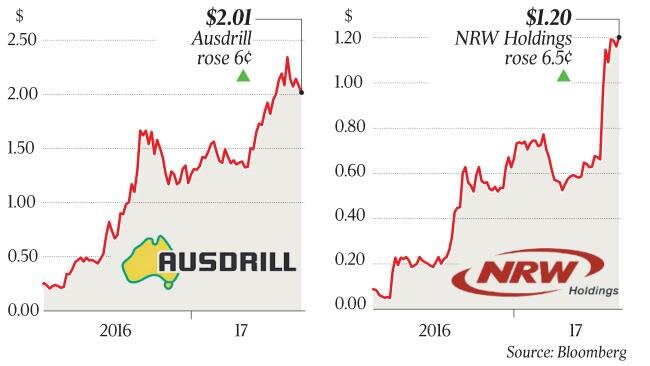
Eli Greeblat 8.45am: Lew’s vested Myer interest fitting
Retail billionaire Solomon Lew’s private clothing companies and his ASX-listed Premier Investments supply just over $200 million of apparel to department store Myer, and this could be motivating the stoush with the department store.
Mr Lew’s sprawling business interests are the largest non-cosmetics supplier to Myer.
The next flashpoint between Mr Lew and Myer is set to emerge on November 1 when Myer holds a strategy day for analysts and investors that is expected to focus heavily on its “New Myer” turnaround strategy and its online aspirations — read more
MYR last $0.77
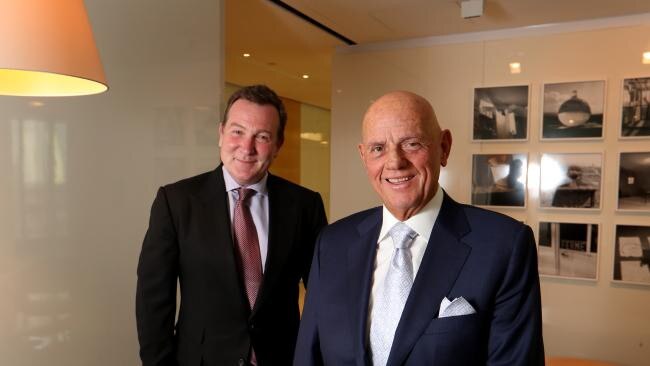
Adam Creighton 8.37am: Big banks’ bloated forex fees
The big four Australian banks are skimming billions of dollars off customers via hidden foreign exchange charges at up to 30 times the rate of US, British and German banks, as part of a growing fee bonanza that dwarfs their losses from abolishing ATM fees.
The major banks charge about $75 to transfer $1000 to a US bank, for instance, most of which comprises the inferior exchange rate — known as a “mark up” — customers receive compared with what the bank gets when it makes the transaction, according to analysis by British market research firm Consumer Intelligence, commissioned by Transferwise.
“Around the world, most banks tell their customers that they only pay a small upfront fee for international payments, but in reality customers pay much more through terrible exchange rates,” said Kristo Kaarmann, chief executive of Transferwise, speaking to The Australian in London.
“We’ve seen this in the UK, Europe, the US and more, but Australian banks seem to have some of the highest exchange rate mark-ups of any banks we’ve seen.”

8.27am: CBA NZ chief to retire
The chief executive and managing director of Commonwealth Bank’s New Zealand arm ASB Barbara Chapman has announced her intention to retire at Easter 2018 after over six year in the post.
CBA last $75.34
7.40am: ASX set to open higher
The Australian market looks set to open higher, after a positive lead from international equities.
At 7am (AEDT), the share price futures index was up 14 points, or 0.25 per cent, at 5,682.
In the US, the S & P 500 and the Nasdaq advanced to record levels, buoyed by gains in technology stocks, while each of the major indexes closed out the quarter with solid gains.
The Dow Jones Industrial Average rose 0.11 per cent, the S & P 500 gained 0.37 per cent and the Nasdaq Composite added 0.66 per cent.
Locally, in economic news today, the Ai Group performance of manufacturing (PMI) index for September is expected, as is the CoreLogic capital city house prices survey for the week just ended.
No major equities news is expected.
The Australian market on Friday closed higher.
The benchmark S & P/ASX200 index rose 11.2 points, or 0.2 per cent, at 5,681.6 points.
The broader All Ordinaries index was up 13.4 points, or 0.23 per cent, at 5,744.9 points.
AAP
7.05: Oil prices bounce back in third quarter
Oil investors got a reprieve from falling oil prices in the third quarter, thanks to unexpectedly strong demand for crude and signs of ebbing U.S. production.
West Texas Intermediate, the US crude benchmark, ended the quarter 12.2 per cent higher, snapping a two-quarter losing streak and marking the biggest quarterly gain since the second quarter of 2016. US crude futures re-entered a bull market in September and are up nearly 21.5 per cent from the lows in June. A gain of 20 per cent or more signals the start of a bull market.
Demand was a bright spot, even amid worries that damage from major hurricanes in the southern US would crimp consumption.
The International Energy Agency raised its forecast for demand growth for next year. At the end of March, global fuel demand was just 1.3 per cent higher than the previous year, according to J.P. Morgan Asset Management. By the end of July, demand grew 3.2 per cent from the previous year — the biggest year-over-year increase since 2010.
Dow Jones
6.50am: Dollar steady
The Australian dollar is little changed against the US dollar with most major currencies either steady or range-bound since the last local trading session.
At 6.35am (AEDT), the Australian dollar was worth US78.38 cents, up slightly from US78.40 cents on Friday.
Westpac’s Imre Speizer says US equities made fresh record highs at month end, while bond yields rose amid mixed economic data and reports that Trump had met a candidate for the Fed Chair and currencies were steady and rangebound. “The US dollar index was little changed on the day, and most currencies were rangebound,” he said in a morning note.
“The AUD ranged between 0.7817 and 0.7854.”
With today being a public holiday over much of Australia there would likely be little to drive the markets.
He expected the Australian dollar “to hold above 0.7800, noting that the market will be quiet given the Australian holiday”.
AAP
6.40am: ASX set to open higher
The Australian share market is expected to open slightly higher today after gains in the US and European markets on Friday, and ahead of a big week of economic data.
Signs of stronger economic growth in China, where there was a surge in China’s manufacturing purchasing manager’s index for September, are also set to boost the local bourse.
At 6.55am (AEDT), the SPI futures index was up 14 points.
Investors will be keenly observing the Reserve Bank of Australia’s meeting tomorrow, with interest rates tipped to remain at 1.5 per cent for the fourteenth straight month, according to AMP Capital’s chief economist Shane Oliver.
Wall St closed at record levels for the third straight day on Friday, with the benchmark S & P index posting its sixth straight month of gains. For September, the Dow gained 2.1 per cent, the S & P rose 1.9 per cent and the Nasdaq advanced 1.05 per cent.
“There seems to be ongoing optimism in the overseas markets,” Dr Oliver said.
In Australia on Friday, the share market ended a choppy session in positive territory, with a respite in falling iron ore prices helping materials and resources stocks recover lost ground.
The benchmark S & P/ASX200 stock index finished Friday up 0.2 per cent to 5681.6 points, while the Australian dollar was trading at 78.40 US cents at the close. Dr Oliver said the Reserve Bank would prefer the dollar to be around US70 cents for more stable growth.
A busy week of economic data begins today with CoreLogic releasing home prices data for last week.
Along with the RBA meeting tomorrow, the Australian Bureau of Statistics (ABS) releases building figures for August, with Dr Oliver expecting a bounce in figures.
On Thursday, the ABS releases retail sales trades for August and international trade figures.
Dr Oliver said both should see a rise from the previous figures.
AAP


